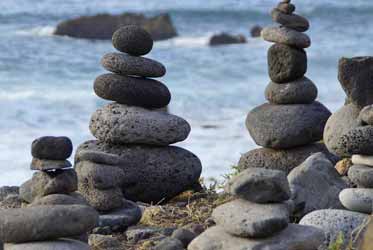Previously, I wrote about the Ukhupacha (the Lower World) in conjunction with teaching the first weekend of the Pachakuti Mesa Apprenticeship Series. So, as the second weekend of teaching came up – A Balance of Power (Transforming the Present) – I found myself challenged in putting pen to paper with an adequate reflection.
And why is that? Why is it we often find ourselves avoiding the “real world”? True, we get up every day, go to our work, and tend to our needs. However, are we really present in these activities? Or, are we just waiting it out for the next weekend, the next vacation, the next moment?
Read Daniel’s previous article Embracing the Darkness: Thoughts on the Lower World.
Find out more about the Pachakuti Mesa Apprenticeship Series.
I found the answer to these questions during my weekend of teaching A Balance of Power. In this second part of the Apprenticeship Series we explore the realm of the Kaypacha, otherwise known as the Middle World. In the three worlds of the Quechua cosmology, the Kaypacha is the one which represents ordinary reality. The term is a conjunction: pacha means “world” or “realm”; kay means “to be” or “to exist.” In other parts of the PMT Apprenticeship series we explore non-ordinary states of consciousness, but on this weekend we are called to manage the world directly around us. We must be awake, we must be aware.
Teaching with my wife Autumn, we found ourselves initially challenged in finding a balance with each other and with the group of students. Communication and interactions seemed off-kilter. Energy was either too high or too lethargic. We found ourselves in a constant process of adjustment. The chaos was wearing us out.
During one of our breaks, we took a moment to sit at the mesa. The answer was, of course, staring us right in the face.
In this weekend, students are introduced to many new artes (medicine pieces) which are functional tools used on the mesa for various healing and ceremonial purposes. Two of these are called the Intirumi and the Killarumi. These artes sit along the horizontal matrix of the mesa on the east-west longitudinal between K’yuchi (the center) and respectively Inti (the east) and Mamakilla (the west). In the Pachakuti Mesa Tradition, Mama Killa is recognized as the power of Grandmother Moon and Inti as Father Sun. These two celestial bodies provide the fundamental mechanism of our Kaypacha experience: the sun rises and sets, establishing the template of our days; the moon goes through phases, providing our journey of monthly cycles. The sun also signifies the mental capacities of our experience; the moon epitomizing the emotional aspects of living.
But how can one harness the power of the moon, or especially the sun, without becoming overwhelmed? We two-leggeds tend to bite off more than we can chew. In our efforts to become balanced, we often lean too heavily on one side of the spectrum than the other. For instance, we realize we become too mental, so we dive too deep into the ocean of emotion. Or, we feel the need to relinquish our emotional upheavals, then become too analytical and calculating. Indeed, the game of balance is much like trying to dance on a set of scales, a see-saw or rollercoaster ride.
An important aspect of awareness, however, is realizing that these two polarities of life cannot act alone. don Oscar Miro-Quesada says in his book Lessons in Courage, “The awareness of our basic interdependence is what will bring the change we seek.” Though don Oscar was speaking in terms of sacred reciprocity here, the principle still applies.
Our consciousness is a matrix of relationship. All bodies of reality – physical, emotional, spiritual, and mental – are an interdependent network which generates our experience of soul. In the realm of the Kaypacha, this is the value of the Intirumi and Killarumi: they facilitate the momentum of interdependence and participation between the two polarities of sun and moon, mental and emotional states.
Anthropologist and expert in Andean medicine Joseph Bastien calls this interaction a tinku: “Tinku emphasizes the importance of contrasting pairs, and in the Andes almost everything is understood in juxtaposition to its opposite.” As the opposites come to together in relationship, harmony ensues.
This is where we find our center, not only in ceremony, but in life. This center, this middle path, is called Chawpin. A Chawpinsuyu Hatun Curandero is a great healer who has attained a level of mastery of being able to draw power from both sides of the mesa. “In doing so,” states mesa carrier and author Matthew Magee, “the master curandero becomes a seguro, which means he or she has reached a state of physical, mental, emotional, and spiritual safety. In finding this supreme balance, one experiences no separation between subject and object: a result of one’s mastery of the self and complete surrender to Divine Will.”
Utilizing this lesson of the Intirumi and Killarumi, Autumn and I enacted a collective healing with the intention of activating a harmonized tinku within the group. Focusing on balancing both the mental and emotional states of the group, we pictured the participants in the lodge much as we would artes on a mesa. Where a person is seated within the lodge is very important to the energy they will be exposed to, as well as that which they bring to the group at large; just as artes placed on the west side of the mesa will encounter the emotional aspects of the altar, and artes on the east side relate to the mental. Maybe, as we all do too often in our daily lives, the participants were leaning too heavily on one side or the other, causing the imbalance within the group.
So, in a ceremonial manner we shuffled the participants throughout the lodge, sometimes having them switch seats with their opposites in the room in order to get a dose of the polar energy they weren’t used to. Sometimes this is done with artes on a mesa – specifically the Intirumi and Killarumi – allowing an integration of the polarizing forces of the mesa (or lodge). Since the mesa is an outward reflection of our inner world, when these forces are ritually harmonized there is an effect on our interior consciousness. The result is a compatibility of these otherwise separate aspects of ourselves where they cooperate in relationship rather than counteract each other.
In this compatibility, when our inner world is in balance, our Chawpin – our center – becomes fully realized in our bodies. When the ceremonial process was over, the result was clear: students felt awake and aware, fully integrated into the experience that was happening now, rather than letting their minds or hearts wander into the past or future. Any obstacles to being present had been removed. Autumn and I were not isolated from this process; together with the participants we all felt the shift. The struggle for equilibrium slipped away and we allowed ourselves to just be.
We were Chawpin together.
1Glass-Coffin, Bonnie and don Oscar Miro-Quesda. Lessons in Courage: Peruvian Shamanic Wisdom for Everyday Life (Faber, VA: Rainbow Ridge Books, 2013) 44.
2Bastien, Joseph W. Mountain of the Condor: Metaphor and Ritual in an Andean Ayllu (Love Grove, IL: Waveland Press, Inc., 1985) 58.
3Magee, Matthew. Peruvian Shamanism: The Pachakuti Mesa (Kearney, NE: Morris Publishing, 2005) 61-61.
About the Author
Daniel Moler is a writer, artist, and sanctioned teacher in the Pachakuti Mesa Tradition. He is the author of Shamanic Qabalah: A Mystical Path to Uniting the Tree of Life and the Great Work from Llewellyn Worldwide, Machine Elves 101, RED Mass, as well a contributor in Ross Heaven’s book on Peruvian healing Cactus of Mystery and Llewellyn’s 2020 Magical Almanac. He has published fiction and nonfiction works around the world in magazines, journals, gaming modules, and online, including: GrahamHancock.com, Positive Health Magazine, Cannabis Culture, The Tattooed Buddha, Sacred Hoop, and A Journal of Contemporary Shamanism. Visit Daniel online at www.danielmolerweb.com.





